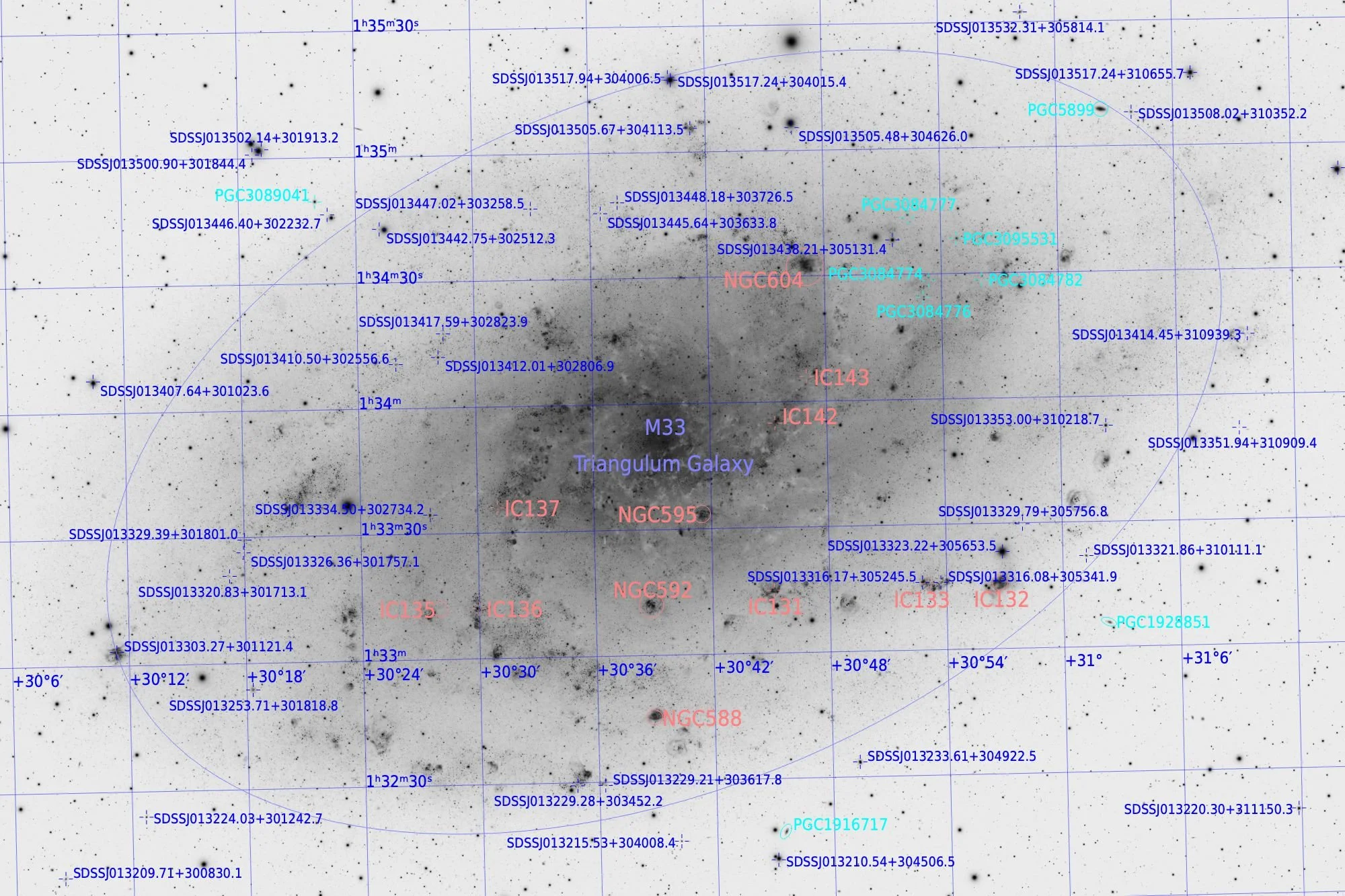The Triangulum Galaxy, M33
About the Subject:
The Triangulum Galaxy is the third largest galaxy in our MilkyWay’s local group after Andromeda and the Milky Way itself. It is about three million light years away, just a bit farther than Andromeda, and is about half the size of our own Milky Way. It gets its name from the triangle shaped constellation in which it lies. One of the most interesting aspects of M33 is its high rate of star formation. In this image, the most prominent star forming regions can be seen as red or pink areas. The color comes from ionized hydrogen gas that is made to fluoresce by the ultraviolet light coming from the new, hot stars. M33 is undergoing star formation at a rate roughly ten times higher than Andromeda.
Due to its relative proximity, M33 can fill the field of view of even a moderate aperture telescope, and it is a favorite subject for professionals and amateurs alike since it is possible to distinguish a large number of individual stars within the galaxy rather than just nebulosity from stars that are too far away to resolve. In fact, in a recent mosaic of images from the Hubble Space telescope, scientists were able to resolve twenty-five million individual stars in a region of space only 14,000 lightyears across. M33, like Andromeda, appears to be headed straight for the Milky Way galaxy, and the three galaxies may collide together in approximately four billion years.
Date, Location, and Equipment:
October 28-31, 2021 and September 24 - October 10, 2024, Rowe, NM, USA
Astro-Physics 305mm Riccardi-Honders Cassegrain @ f/3.8
Astro-Physics 1100GTO AE Mount with Absolute Encoders
QHY600PH Monochrome Camera at -10°C
Chroma 50mm x 50mm filters
3nm H-Alpha
3nm OIII
LRGB
28h 42m Red, 26h 11m Green, 28h 10m Blue, 13h 55m H-alpha, 13h 10m OIII, total of 110h 9m integration
Software:
Astro-Physics APCC for mount control and advanced pointing model
NINA for autofocus, sequence of images, and camera control
PHD2 for guiding
PixInsight for calibration and all post processing
This is an RGB image balanced using spectrophotometric color calibration on foreground stars. The reds and teals come from the addition of H-alpha and OIII signal respectively in order to make star forming regions, supernova remnants, and planetary nebulae stand out from the blackbody radiator stars.


